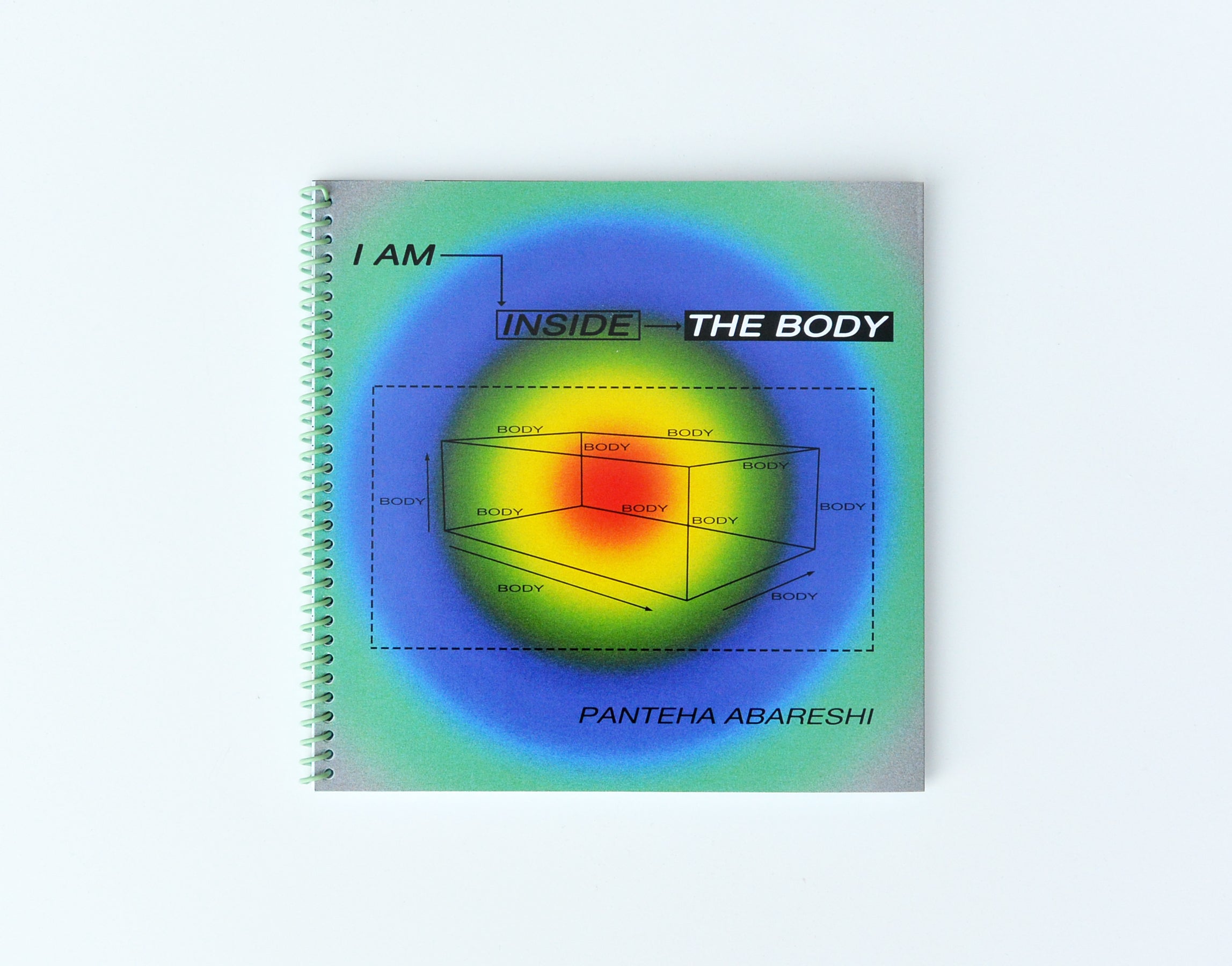Panteha Abareshi: I Am Inside the Body
Published by Sming Sming Books
September 2020, English, 8 x 8 in, 44 pages, risograph, b/w, softcover
Edition of 200
Design: Panteha Abareshi + Sming Sming Books
Made over the course of the quarantine in the spring of 2020, Panteha Abareshi's I Am Inside the Body documents the artist’s own personal grief and processing of the shifting context of their sick/disabled body in the wake of a global health pandemic. Suspended in a limbo of isolation unregulated by the timelines followed by the able-bodied population, Abareshi turned to a practice of emotional documentation through the form of daily writings, and the contemplation of the diagram as a product of the innate human need to quantify and represent the unknown.
I Am Inside the Body contains diagrams of theoretical scientific and mathematical concepts, that Abareshi drew daily from memory, accompanied by daily writings. It is a highly personal collection—the dissemination of a private journal. The pages reveal a vulnerable processing of one’s cyclical acknowledgment of their inability, deterioration, and pain, and the systems we create to organize our thoughts and emotions in the most precarious times.
Panteha Abareshi is an interdisciplinary artist, originally from Montreal and now based in LA. Her work is rooted in her existence as a chronically ill/disabled body existing with multiple medical illnesses, at the root of which is sickle cell zero beta thalassemia—a genetic blood disorder that causes debilitating pain, and bodily deterioration that both increase with age. Through her work, she aims to discuss the complexities of living within a body that is highly monitored, constantly examined, and made to feel like a specimen. Taking images that are recognizable as “human” forms, and reducing them to the gestural is a juxtaposition of her own body's objectification, and dissection. Through her performance work, she pushes her body to, and often beyond, the limits of its ability. The radicalized abjectification of her own corporeal form allows for a continued examination of her bodily deterioration, and its connection to a larger context of universal fragility fear, pain and mortality. In her video work and installations, she aims to make the viewer hyper-aware of their own body, and actively employ accessibility as a tool, both withholding and over-extending it as a means of casting light onto the ill/disabled experience. With every piece, her practice traces and documents her body's malfunction, and its disintegration. With this deterioration comes implantation of medical devices, prosthetics, and the use of mobility aids. Her body is the primary medium in her practice, and these materials become vital to the visual language of my work.








